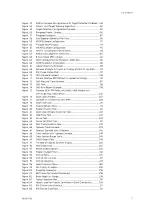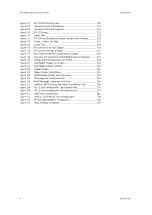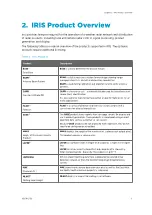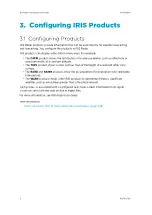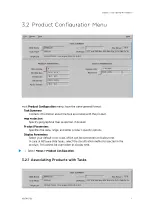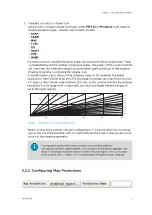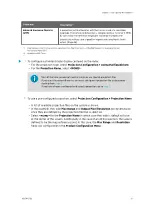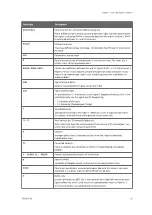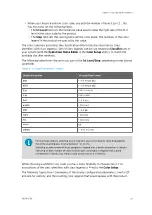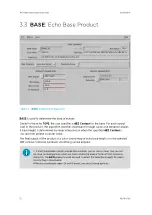
Each product is associated with a task, which provides the ingest data for the product.
TASK Summary
information, taken from the associated task, shows the key task
configuration parameters.
When associating a task with a product, the system must consider
matched resolution
sampling
and constructing
volume scans
for a product.
1. Select
TASK Name
to show a list of tasks.
Note that certain product types require different types of task associations.
Product Type
Description
Running a product
from ingest data
Enter a task name, including wildcard characters.
The question mark (?) matches a single character; the asterisk (*) matches any
string of characters.
Volume scan
product from hybrid
tasks
In the task name section:
• Specify the input tasks with an underscore and single letter.
• Specify the sub-task suffix letters in the
Sub Task
box.
Type a "*" to indicate all subtasks.
• Type individual letters such as
ABC
,
AB
,
BC
, or
AC
to select which portions of
the hybrid to include.
• Type "–" to indicate a range of letters, for example "
A–DF
" means
ABCD
and
F
.
RAW
products
Always made from a single task.
You must make a separate
RAW
product for each sub task.
If you are retrieving
RAW
data from tape or receiving a
RAW
product over the
network, there is no task configuration file on your disk. In this case, type the task
name directly in the field, exactly as it appears in the
Ingest Summary
menu or
the
Tape
menu.
RHI
products
Include
RHI
in
RHI
task names to distinguish them from
PPI
scans.
2. To optimize product appearance and system performance, define the matched
resolution sample.
For best results, the range bin spacing and number of bins in the task should match
what is needed for the product. This is called a
matched resolution sample
. The match
does not need to be exact because IRIS uses interpolation algorithms.
For best performance, match the range bin spacing, number of bins and maximum
range in the task configuration, to the desired pixel resolution, pixel scale and maximum
product range in the product configuration.
For example, if you are making a low resolution product (240 × 240) to a range of
120 km (74.6 mi), and you want a single pixel to represent 1 km (0.6 mi) of data,
configure the task configured with at least 120 range bins spaced 1000 m (3280 ft
10 in) apart.
Note that 170 bins can be displayed to the corners of the product. For a medium
resolution product with 1 km (0.6 mi) bin spacing, the best match is for tasks with 240
to 340 bins spaced 1 km (0.6 mi) apart. Note that IRIS can make products for any range
bin spacing that can be specified in the
TASK Configuration
menu, for example, 500 m
(1640 ft 5 in) or 250 m (820 ft 3 in) spacings can be used as well.
IRIS Product and Display User Guide
M211319EN-H
18
RESTRICTED
Summary of Contents for IRIS
Page 1: ...M211319EN H RESTRICTED User Guide IRIS Radar IRIS Product and Display...
Page 12: ...IRIS Product and Display User Guide M211319EN H 10 RESTRICTED...
Page 71: ...Chapter 3 Configuring IRIS Products RESTRICTED 69...
Page 303: ...Figure 103 Typical Spectrum Plot Appendix A Basic Radar Meteorology RESTRICTED 301...
Page 386: ......
Page 392: ......
Page 393: ......
Page 394: ...www vaisala com...




